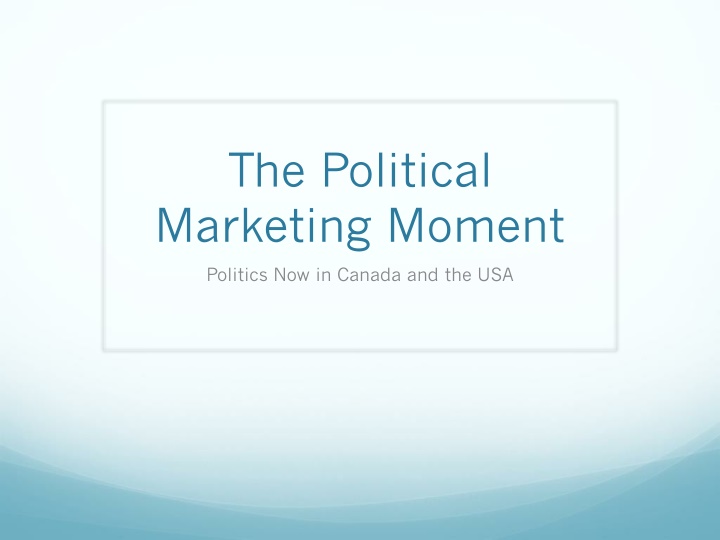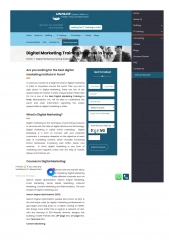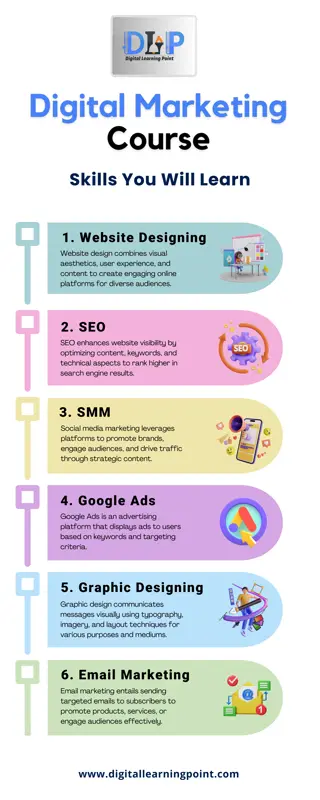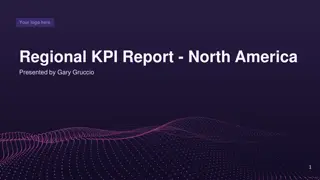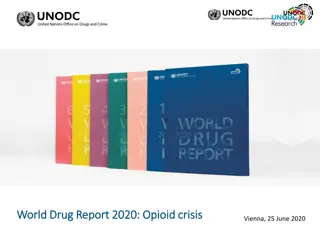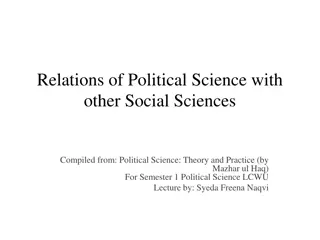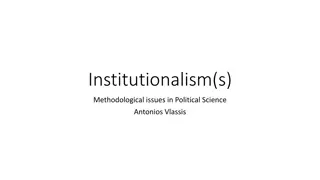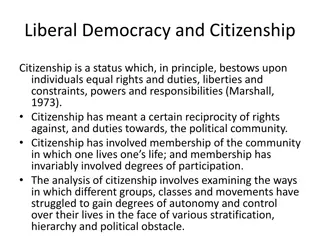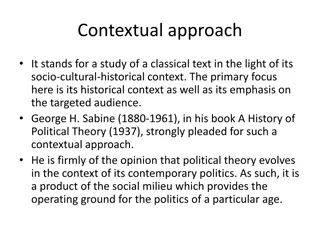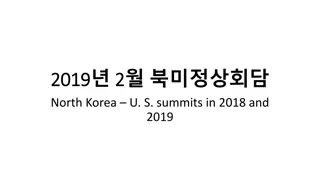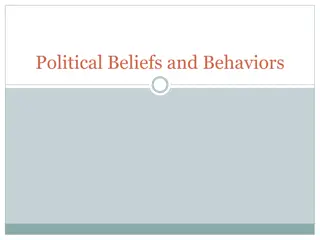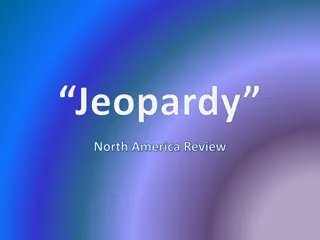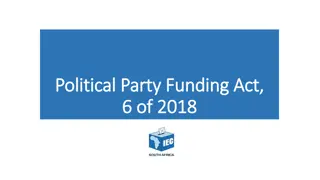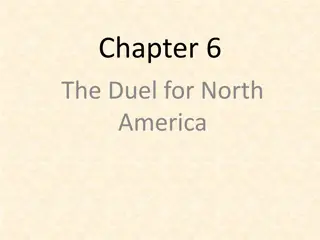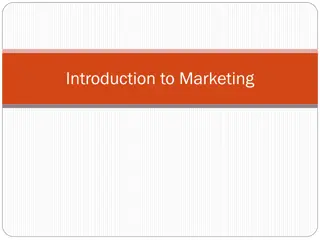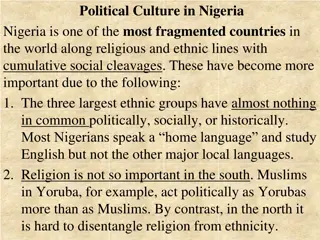The Evolution of Political Marketing in North America
Political marketing plays a vital role in shaping modern politics, blending consumerist values with social and technological changes. Parties and entities strategically position themselves to reach niche audiences through branding and segmentation. This global phenomenon influences societies, technologies, and political landscapes. Examples like Aussie Battlers and the Third Way demonstrate the effectiveness of political marketing in Canada, the USA, and the UK, using emotional appeals like Hope and Change to engage audiences worldwide.
Download Presentation

Please find below an Image/Link to download the presentation.
The content on the website is provided AS IS for your information and personal use only. It may not be sold, licensed, or shared on other websites without obtaining consent from the author.If you encounter any issues during the download, it is possible that the publisher has removed the file from their server.
You are allowed to download the files provided on this website for personal or commercial use, subject to the condition that they are used lawfully. All files are the property of their respective owners.
The content on the website is provided AS IS for your information and personal use only. It may not be sold, licensed, or shared on other websites without obtaining consent from the author.
E N D
Presentation Transcript
The Political Marketing Moment Politics Now in Canada and the USA
What It Is: Political Marketing Market orientation Product development Branding/position/segmentation Voter as consumer
Why Political Marketing ? Explains the way in which parties and other political entities behave In response to social and technological change. It fits the consumerist values we have It fits the lifestyles people have
And It is easier to figure out how to reach the right people and what those people are concerned about than it has been Reaching the right people is the trick The current moment is one of niche narrowcasting, lifestyle communities and discussions within segments
To Be Clear Advertising is a key part of marketing but not all of it. Marketing includes the overall strategy to design and sell the product. Including paid and earned media but a lot more.
Meaning The product or offering is the party s candidates, manifesto and emotions The position is the space that the product holds in the customer s mind The brand is the visual and emotive representation of the product to the audience
Providing an Incentive For political entities to market themselves and their wares much as do other entities. In this, they reflect the society, the technology and the politics in which they exist as much as they shape that. This is a global phenomenon, not just happening in North America or the United States. See for Example Lees-Marshment 2011. Consultants and partisans learn from each other on a cross-national basis
Examples John Howard s Aussie Battlers used in Canada by the Conservative Party to describe some of its audiences The third way used in the USA, Canada and the UK by Clinton, Chretien and Blair respectively. Hope and Change became very popular globally after 2008. The Commonsense Revolution has been launched in multiple places around the globe.
Thus Understanding the audience and the marketplace become vital to building an effective political marketing campaign. A great deal of emphasis on polls and focus groups. To determine effective visuals, language, narrative and policy priorities And what works with which audiences.
Because Much more noise than in the past . Reaching the right audience is more difficult than it once was. Many more channels. The proliferation of new distribution channels makes hitting the right targets more difficult than in the past. Citizens have longer commutes and work hours than once was the case. I can opt out of the political nation and join Leafs nation or build my world around family/work more easily than in the past. Less social connection
Social Disconnection The party as a membership organization is in trouble across North America More independents pay less attention means that marketing in general and branding in particular increase in importance They are key tools to build voter awareness of candidates and platforms CDN parties always have a marketing imperative that their US counterparts don t: they have to sell memberships.
And The dominant values of the age are consumerist. The public expects packages, promotion and significant choice in everything else. When did consumerism become our values ? Gradually, during the last century. As Nimijean has argued, the politics of the age are neo- liberal meaning that fights are over means not ends. Brand battles sharpen distinctions and generate interest.
One Way To Think of All This An ongoing conversation between an organization and its audience targets that includes a campaign and beyond. Loyalty isn t build all at once. It can take a while of showing people why what was promised works as advertised, that those promises made were kept and that taking a next step would be a good thing to do. The idea of a campaign is to have a plan about that conversation
That Includes Products Personality Positioning Brand Communications Plan Audience Targets
Product Definition Politics is about definition in a couple of ways Define yourself Define your opponent
Personality Both in terms of the party leader and In terms of the brand
Party Leader/Face Inextricably linked with the brand in Canada. This is the same in the USA when a party occupies the White House but is more nebulous for the opposition party.
Personality Can also sell the leader as being like average people Both CDN and USA political parties sometimes do this and they sometimes sell other personal traits about the leader like attending an Ivy League University or being a business owner. Or sell values such as empathy or strength.
Meaning Campaigns talk about themselves Campaigns talk about their opponents Opponents talk about themselves Opponents talk about their rivals. In the USA, this strategic grid has four spaces and in Canada it can have four but also up to ten.
The Political Equivalent Of educating the consumer about what the offering is on a given party s side Versus the offerings of rivals. One difference is that the battle is more existential than over market share a lot of the time in politics but In a multi-party system like Canada s, it can be over market share as well.
Positioning What space do you want occupy in the mind of the consumer ? Generally, somewhere nearer the center is better in politics but the marketing challenge is The center can shift and political types can t shift with it all the time if they want to retain overall authenticity. Authenticity the perception of being what one says one is in marketing.
The Brand The total user experience with the product according to Zyman The image, slogan, music and values supporting a product. The brand needs to fit the product s features and benefits but also resonate with its target audience.
In The USA USA Republicans have used the Reagan/Conservative brand since 1980 as one Plus the Lincoln heritage has merged with the Reagan/Conservative one And the elephant is still around As is an emphasis on tradition
All of which More or less work together to build a narrative that is visually and emotively coherent Put the Republican Party in a specific place in the mind of the prospect Provide a specific set of emotions and understandings to the audience targets
The Democrats The Dems are much more muddied. Sometimes it is Obama, sometimes it has been the Congressional leadership but it isn t consistent and this is why their messaging isn t consistent.
The First One Clearly ties to Obama But also looks like a target as one wag put it and What happens if Obama loses ?
The Second One Ties to the Democrats heritage. They re called the Donkeys The donkey logo has serious equity Changing to the newer logo visually throws all this away but it clarifies that the D s are the party of Obama
And There are still individual Obama logos selling him not the party This is far less coherent narratively and visually than what the Republicans have done but they ve also been doing it for longer Thus, the muddling of the Democratic Brand continues
Canadian Parties Use the logo as a key part of the brand And are aware that they are doing so.
Electoral Promise/Positioning
Colors Absolutely own their colors consciously. This is different from the USA in which the media imposes more color discipline than do the parties. Fonts can also send messages but the fonts have changed over time here.
Visuals A picture really is worth a thousand words The visuals associated with a brand can be the key vehicle through which its contents get distributed.
Slogans Can be a key conduit to transfer the brand value proposition Two Canadian examples: Forward Together Ontario Liberals and Here For Canada Conservative Party of Canada Two US: Change We Can Believe In and Together We Can
Key US/Canada Difference Canadian Parties are more limited in the heat they can put in their brand/ads They cover this in other parts of the ads US parties can be much hotter visually and in the verbiage than can their Canadian counterparts because
Emotions As Westin has shown in the US case, much of the way people experience politics is emotional not analytically. The emotions that similar ideological parties work with around the globe seem the same. Thus, the emotions that a party can work with in a specific setting are limited by what the audience will respond to.
Audiences Things that might work well in a federal election might not work so well in a provincial one because the audience demography is different. In the era of niche narrowcasting, the emotions that might activate one group could outrage another.
